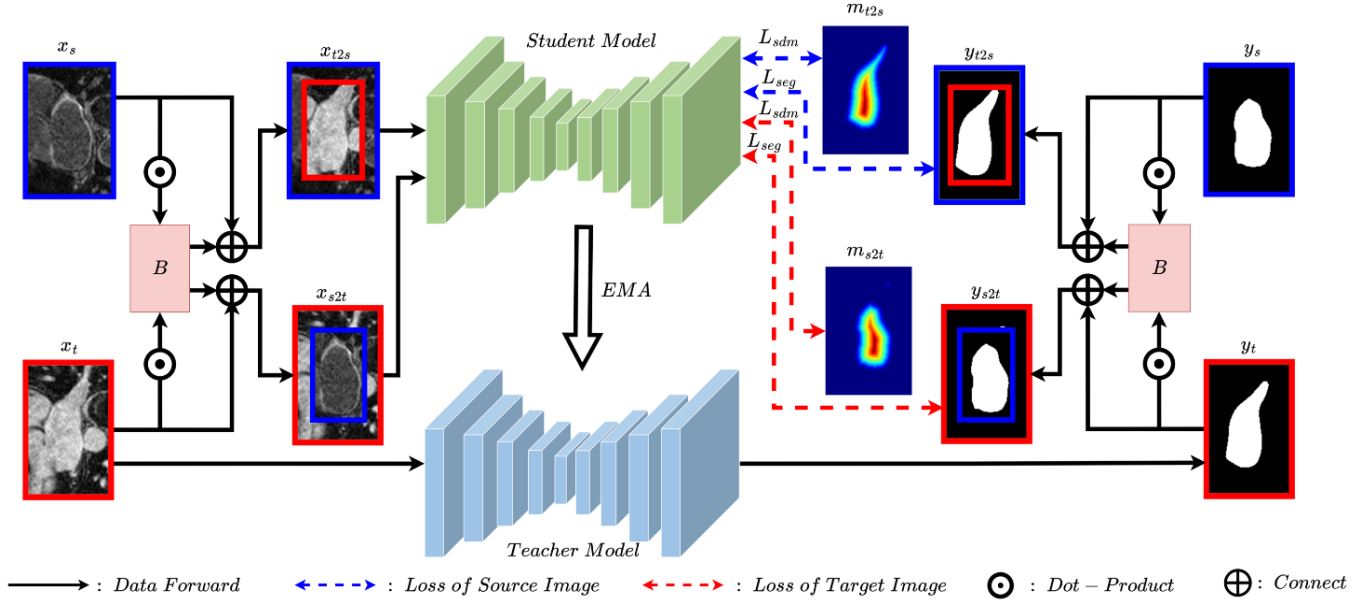

Dual bidirectional copy-paste with shape constraint for semi-supervised image segmentation
Bowei Shen, Xiaoquan Huang, Yonghong Shi†, Shiyao Chen†
21st IEEE International Symposium on Biomedical Imaging (ISBI)
Abstract
Semi-supervised learning utilizes unlabeled data and a small amount of pixel-level labeled data to achieve image semantic segmentation. However, its performance largely depends on the semantic learning of the boundary details of the object in the image, as the uncertainty of the boundary region can reduce the segmentation accuracy. To this end, this paper proposes a novel semi-supervised learning method based on the student-teacher model, which is constrained by the dual bidirectional copy-paste and the signed distance map of the object shape. The method is carried out through two stages: fully supervised pre-training and semi-supervised re-training. The former uses labeled data to train and learn the initial student model, and its parameters are used to initialize and update the latter’s teacher model, which is used to segment unlabeled data to obtain its pseudo labels. At each stage, the dual bidirectional copy-paste between ‘labeled data’ enhances the data, while the similar copy-paste performed on the corresponding ‘label’ supervises the student model. Copy-paste allows the network to focus on the entire object, while the signed distance map on the label data helps to learn the complex shape changes of the object boundary. Especially in the re-training stage, the above calculation mainly occurs between labeled data and unlabeled data with 'pseudo label', which effectively bridges the empirical distribution mismatch between labeled data and unlabeled data, enabling the network to learn a more generalized data distribution. Our method was validated on two datasets, LA Heart and ACDC. Compared with other semi-supervised learning methods, our method outperforms previous works at 5% and 10% labeled data volumes, achieving the SOTA results.
